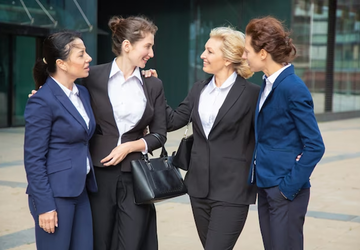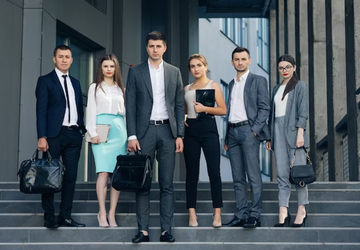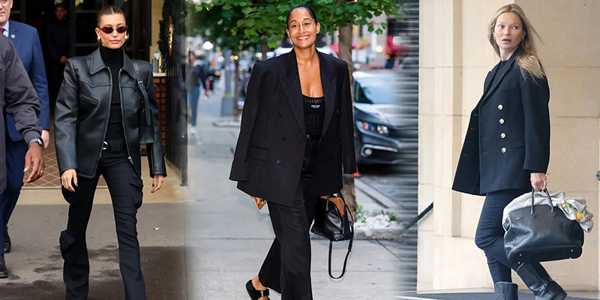Who Dictates Office Dress Codes Today
The office dress code rules landscape has witnessed a progressive and dynamic transformation. This change reflects a broader cultural shift within the modern workplace, where traditional norms increasingly give way to more flexible and personalized approaches. The modern office dress code now often prioritizes comfort and self-expression, a departure from the one-size-fits-all standards of the past. This evolution in office dress code rules symbolizes a deeper understanding and appreciation of diversity in the workplace and a move towards more inclusive and employee-centric policies.
Corporate Culture's Influence on Defining Office Fashion
In the current corporate world, who sets office fashion is intimately tied to the organization's overarching culture. Progressive companies are leading the charge in redefining office dress code rules, showcasing a modern dress code that mirrors their values, such as inclusivity, creativity, and innovation. This cultural shift in who sets office fashion reflects a broader trend where companies use dress codes to expand their brand identity and enhance employee satisfaction and engagement.
The Tech Industry's Pioneering Role in Casual Office Attire

The technology sector has been instrumental in reshaping office dress code rules. Renowned for their unconventional work environments, tech companies have championed a relaxed approach to office fashion, significantly influencing who sets office fashion across various industries. Their adoption of a casual yet polished modern office dress code has redefined professional attire, proving that a more relaxed dress code can coexist with high productivity and professionalism.
Employee Empowerment in Shaping Dress Code Policies
A noteworthy trend in contemporary office dress code rules is the increasing emphasis on employee input. This collaborative approach in determining who sets office fashion underlines a shift towards a more democratic and employee-focused workplace. By involving employees in the conversation around office dress code rules, companies acknowledge the importance of individual comfort and expression in fostering a positive and productive work environment.
Envisioning the Future: A Harmonious Blend of Comfort and Professionalism in Dress Codes
Looking ahead, the trajectory for office dress code rules suggests a continued emphasis on balancing comfort with a professional aesthetic. The modern office dress code will evolve further, embracing a wider range of styles and preferences yet maintaining professionalism. This future-focused approach in who sets office fashion will continue to evolve with changing workplace cultures, employee expectations, and societal norms while upholding the core principles of professionalism and respect within the office environment.
Embracing Diversity and Individuality in Office Fashion
In today’s workplace, office dress code rules are no longer about conformity but about celebrating diversity and individuality. The traditional notion of a rigid, formal dress code is giving way to more adaptable and inclusive office fashion trends. This paradigm shift in who sets office fashion reflects an increased awareness of the diverse workforce and their varied needs. Companies recognize that allowing employees to express themselves through attire can increase creativity, job satisfaction, and a sense of belonging. This approach to modern office dress code rules fosters a more inclusive environment, accommodating various cultural and personal preferences.
The Role of Leadership in Setting Office Fashion Trends
The question of who sets office fashion is increasingly being influenced by visionary leaders who understand the impact of workplace attire on overall company culture. These leaders are redefining office dress code rules to be more aligned with their company's ethos and the evolving workforce's expectations. This shift in leadership perspective creates modern office dress code policies that are less about control and more about empowering employees. As leaders model these changes, they set a precedent, illustrating that professional attire can be flexible and respectful of individual styles.
Technology Companies as Trailblazers of Casual Office Attire
The influence of technology companies on office dress code rules cannot be overstated. These trailblazers who set office fashion have demonstrated that a relaxed dress code can coexist with innovation and professionalism. This sector's impact is seen in the widespread adoption of casual yet stylish attire across various industries as the modern office dress code. Their approach has challenged traditional norms and shown that comfort does not compromise productivity but can enhance it.
Employee Feedback: Shaping Modern Office Dress Code

An emerging trend in defining office dress code rules is the growing importance of employee feedback. In this more democratic approach to who sets office fashion, companies are actively seeking and incorporating employee opinions. This collaboration ensures that modern office dress code policies are practical and resonate with the workforce. By involving employees in these decisions, companies acknowledge the importance of their voices, which fosters a more engaged and committed workforce.
Looking Ahead: The Future of Office Dress Code
The future trajectory of office dress code rules points towards a continued trend of blending comfort with professional style. The modern office dress code is expected to evolve to include a wider range of styles while maintaining a professional atmosphere. This evolution in who sets office fashion will be guided by changing workplace cultures, employee preferences, and broader societal trends. The emphasis will be on creating a work environment that respects individual expression while maintaining a cohesive professional identity.
Frequently Asked Questions (FAQs) on Modern Office Dress Codes
What Constitutes an Appropriate Modern Office Dress Code?
The modern office dress code has evolved to balance professionalism, personal style, and comfort. Appropriate attire typically includes smart casual or business casual outfits. It's about creating a neat, respectful look that reflects the company’s culture. The emphasis is more on expressing individuality while maintaining a professional appearance.
How Has the Tech Industry Influenced Office Fashion?
The tech industry, known for its relaxed and innovative environment, has significantly influenced office dress code rules. This sector has championed a more casual approach to workplace attire, demonstrating that a less formal dress code can coexist with high productivity and professionalism. Various industries have adopted this trend, reshaping.
Can Office Dress Codes Affect Employee Performance?
Absolutely. Office dress code rules can impact employee morale and productivity. A dress code for comfort and personal expression can enhance employee satisfaction and creativity.





